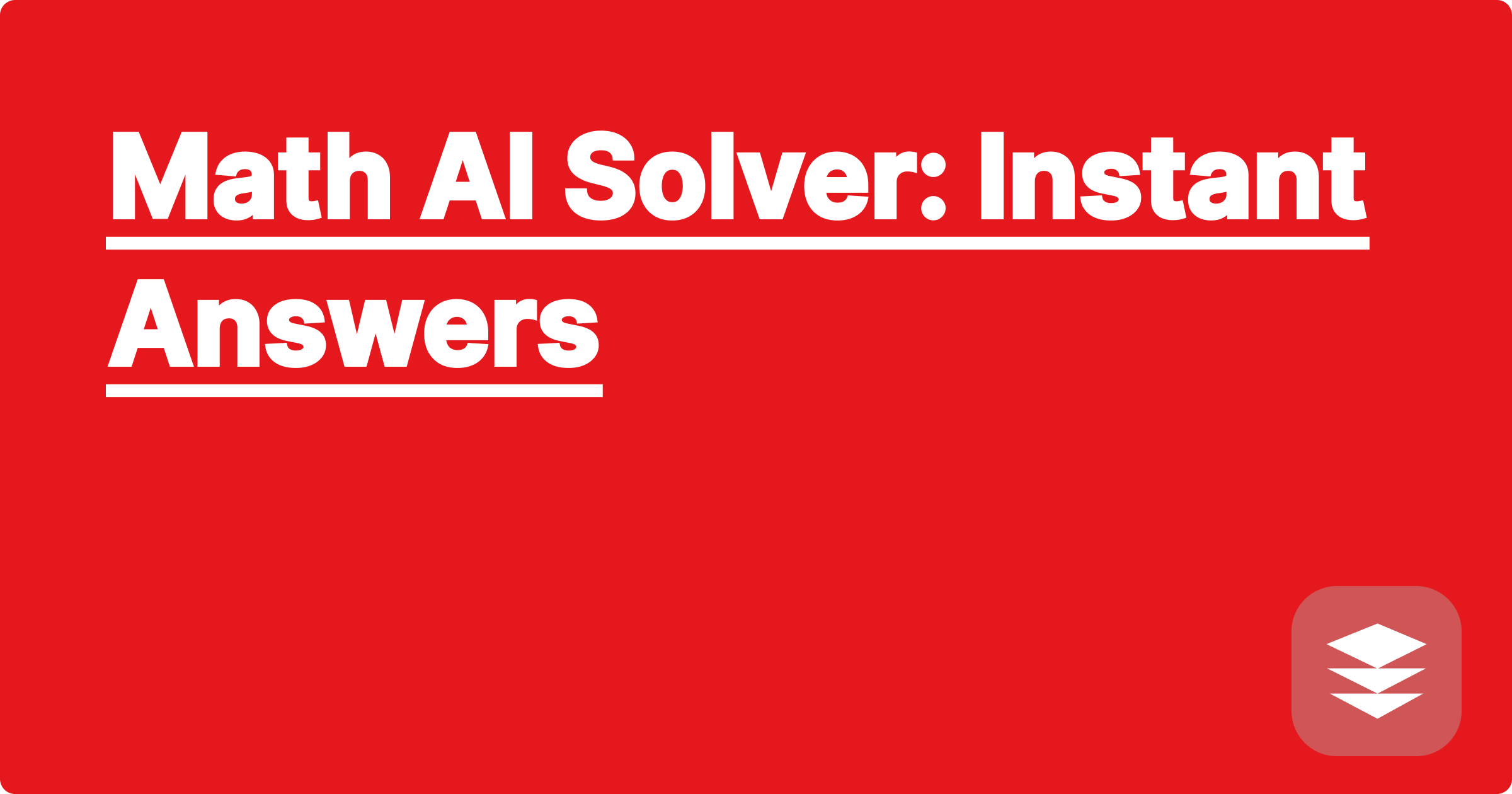
STEM fields often present complex mathematical challenges that can be time-consuming and sometimes overwhelming. From intricate calculus problems to statistical modeling and data analysis, the mathematical demands placed on students and researchers can be significant. Artificial intelligence offers a powerful new set of tools to assist with these challenges, providing potential for more efficient problem-solving and deeper understanding. AI-powered math solvers can offer instant answers, step-by-step solutions, and even explanations of underlying concepts, potentially revolutionizing the way we approach mathematical problem-solving in STEM.
This development is particularly relevant for STEM students and researchers who face increasing pressure to master complex mathematical concepts. The ability to quickly and accurately solve mathematical problems is crucial for success in these fields. AI math solvers can provide a valuable supplementary resource, allowing students to check their work, understand different solution approaches, and explore more complex problems with greater confidence. Researchers can also leverage these tools to accelerate their work, freeing up time and mental energy for more creative and strategic thinking. Embracing these tools can provide a significant competitive advantage in an increasingly demanding academic and professional landscape.
The core challenge in STEM fields often revolves around efficiently and accurately solving mathematical problems. These problems can range from simple algebraic equations to complex differential equations, statistical analysis, and optimization problems. Students often struggle with understanding the underlying concepts and applying the correct formulas or procedures. Researchers may face computationally intensive tasks that require significant time and resources. Traditional methods of problem-solving, such as manually working through equations or using calculators, can be slow and prone to errors. Furthermore, simply obtaining an answer without understanding the underlying logic can hinder deeper learning and application of these concepts to real-world scenarios. This highlights the need for more efficient and insightful tools for mathematical problem-solving in STEM.
AI-powered tools like ChatGPT, Claude, and Wolfram Alpha offer a promising approach to tackling these mathematical challenges. These tools leverage sophisticated algorithms and vast datasets to provide instant answers, step-by-step solutions, and even explanations of the underlying mathematical principles. ChatGPT and Claude, for example, can be used to generate solutions to word problems, explain mathematical concepts in natural language, and even generate code for solving specific equations. Wolfram Alpha excels at symbolic computation, allowing users to solve complex equations, perform calculus operations, and generate visualizations of mathematical functions. By combining these tools strategically, STEM students and researchers can significantly enhance their problem-solving capabilities.
Using these AI tools is relatively straightforward. First, clearly define the problem you want to solve. This might involve writing out the equation, describing the word problem in detail, or specifying the type of calculation you need to perform. Next, choose the appropriate AI tool for the task. For example, if you need to solve a complex integral, Wolfram Alpha is likely the best choice. If you need help understanding a concept or solving a word problem, ChatGPT or Claude might be more suitable. Then, input the problem into the chosen tool, ensuring the syntax and formatting are correct. The AI will then process the input and generate a solution, often within seconds. Finally, carefully review the output, paying attention to the steps involved and the underlying logic. This is crucial for ensuring accuracy and deepening your understanding of the concepts involved.
Consider the problem of finding the derivative of the function f(x) = x^3 + 2x^2 - 5x + 1. Using Wolfram Alpha, you simply input "derivative of x^3 + 2x^2 - 5x + 1". The output will instantly provide the derivative: f'(x) = 3x^2 + 4x - 5. Another example involves solving a word problem. Suppose the problem states: "A train travels at 60 mph for 2 hours. How far does it travel?" You can input this problem into ChatGPT or Claude. The AI will not only provide the answer (120 miles) but also likely explain the logic: distance = speed x time, so distance = 60 mph x 2 hours = 120 miles. These examples demonstrate the versatility and power of AI tools for solving a wide range of mathematical problems.
To effectively utilize AI in STEM education and research, several strategies are recommended. First, focus on understanding the underlying concepts rather than simply relying on the AI for answers. Treat the AI as a learning tool, not a shortcut. Second, always double-check the AI's output. While these tools are generally accurate, errors can occur. Verify the results using alternative methods or your own understanding of the concepts. Third, experiment with different AI tools to discover which ones best suit your specific needs and learning style. Finally, integrate AI tools into your workflow strategically. Use them to supplement your learning, not replace it. By following these tips, you can leverage the power of AI to enhance your academic performance and research productivity.
In conclusion, AI-powered math solvers represent a powerful new resource for STEM students and researchers. By understanding the capabilities and limitations of these tools, and by using them strategically, you can significantly enhance your problem-solving abilities and deepen your understanding of mathematical concepts. Begin exploring these tools today and discover how they can transform your approach to STEM learning and research. Experiment with different platforms and problem types to fully grasp the potential of AI in mathematics. Embrace this evolving technology and unlock new possibilities in your academic and professional pursuits.
Ace STEM Exams: AI Study Planner
AI for Lab Data: Analyze Faster
STEM Prep: AI-Powered Flashcards
AI Coding Assistant: Debug Code
Engineering AI: Design & Simulate